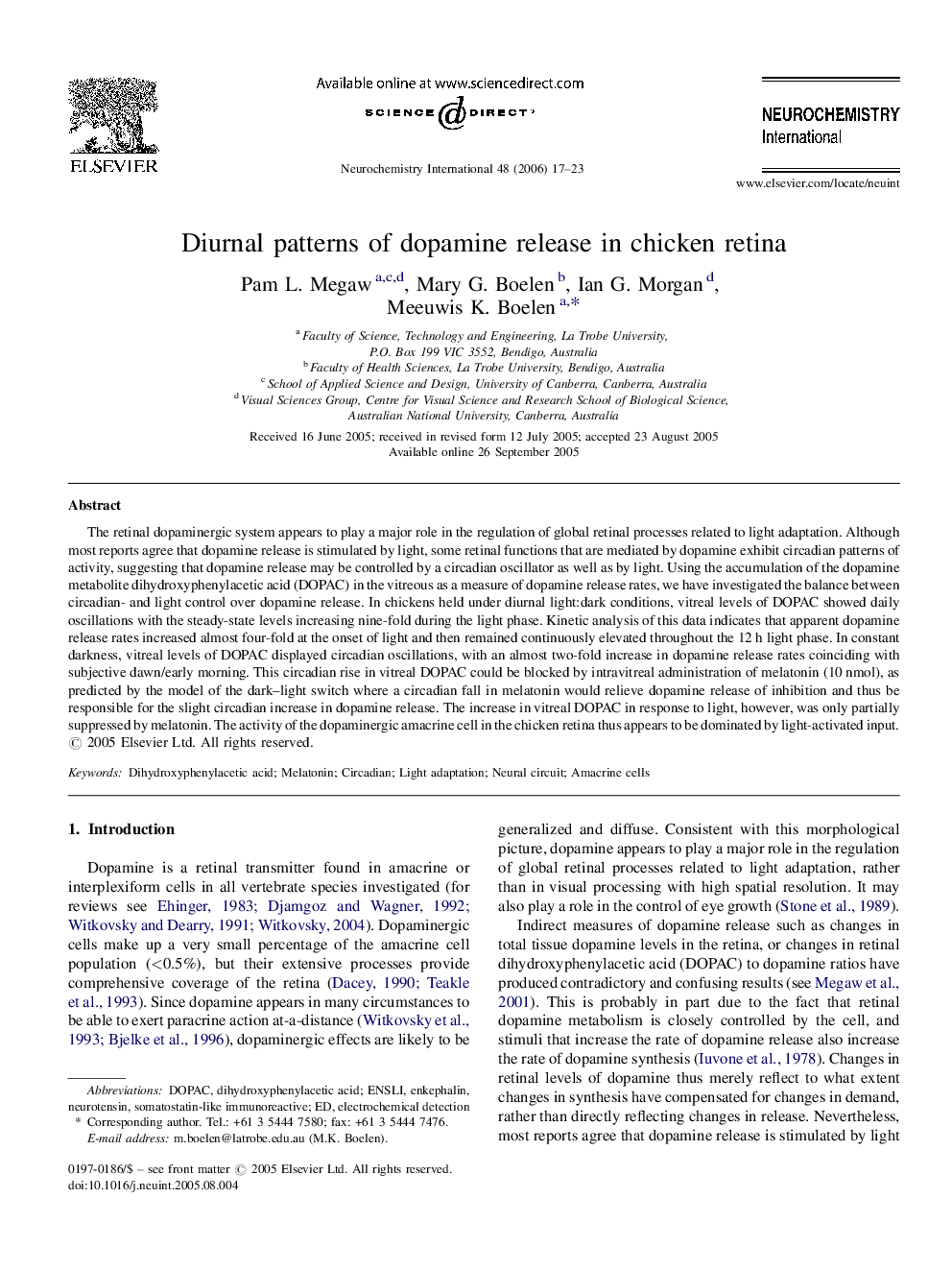| Article ID | Journal | Published Year | Pages | File Type |
|---|---|---|---|---|
| 2202148 | Neurochemistry International | 2006 | 7 Pages |
The retinal dopaminergic system appears to play a major role in the regulation of global retinal processes related to light adaptation. Although most reports agree that dopamine release is stimulated by light, some retinal functions that are mediated by dopamine exhibit circadian patterns of activity, suggesting that dopamine release may be controlled by a circadian oscillator as well as by light. Using the accumulation of the dopamine metabolite dihydroxyphenylacetic acid (DOPAC) in the vitreous as a measure of dopamine release rates, we have investigated the balance between circadian- and light control over dopamine release. In chickens held under diurnal light:dark conditions, vitreal levels of DOPAC showed daily oscillations with the steady-state levels increasing nine-fold during the light phase. Kinetic analysis of this data indicates that apparent dopamine release rates increased almost four-fold at the onset of light and then remained continuously elevated throughout the 12 h light phase. In constant darkness, vitreal levels of DOPAC displayed circadian oscillations, with an almost two-fold increase in dopamine release rates coinciding with subjective dawn/early morning. This circadian rise in vitreal DOPAC could be blocked by intravitreal administration of melatonin (10 nmol), as predicted by the model of the dark–light switch where a circadian fall in melatonin would relieve dopamine release of inhibition and thus be responsible for the slight circadian increase in dopamine release. The increase in vitreal DOPAC in response to light, however, was only partially suppressed by melatonin. The activity of the dopaminergic amacrine cell in the chicken retina thus appears to be dominated by light-activated input.
